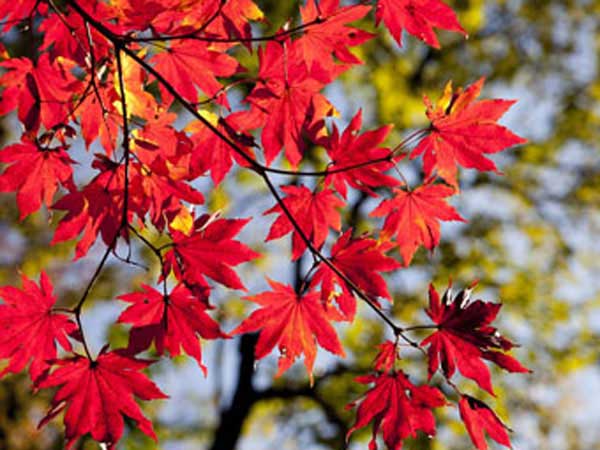
| ||||||||||||||||||||||||||||||||||||||||||||||||||||||||||
Autumn Starts: Saturday, Sep 22 6:54 pm PDT
Autumn Ends: Friday, December 21 2:22 pm PST
Region: California/United States
Astronomical Fall Dates
The first day of autumn often called fall (September equinox or autumnal equinox) is when the sun shines directly on the celestial equator passing from north to south and the length of day and night are almost the same. This is referred to as astronomical autumn or the September equinox.
Astronomical autumn starts at different times around the planet because of the different time zones as related to Coordinated Universal Time (UTC, same as Greenwich Mean Time based on the Royal Observatory in Greenwich, London [1]). For countries located west of UTC your autumn will start earlier than countries located east of UTC.
Astronomical and Meteorological Autumn
Astronomical Autumn is determined by the changing positions of the earth relative to the sun giving us the solstices and equinoxes. Seasons are caused by the tilt of the earth on its axis by 23.5 degrees. The tilt of the earth does not change as it goes around the sun so in the Northern Hemisphere the earth is tilted toward the sun in June and away from the sun in December[2]. When the sun is over the equator you have the equinoxes and when the sun is over the Tropic of Cancer in the most northern position you have the Summer solstice and conversely when the sun is over the most southern position over the Tropic of Capricorn you have the Winter solstice. The September equinox occurs in the Northern Hemisphere between the dates of September 21 to 23 followed by the Winter solstice - December 20 to 23 and then the March equinox - March 19 to 21 and then finally the Summer solstice - June 20 to 22. The United States, most of North America, Europe and many countries in the Northern Hemisphere use astronomical autumn to determine when autumn (fall) season officially starts and ends.
Meteorological Autumn is determined by the annual temperature cycles and the Gregorian calendar. Meteorological autumn starts September 1st in the Northern Hemisphere and lasts 3 months (September, October, and November) with Winter Season (December, January, and February) and Spring Season (March, April, and May) and finally Summer Season (June, July, and August). Australia and New Zealand in the Southern Hemisphere use meteorological autumn thus the months of March, April and May to determine their autumn season.
Autumn and the harvest go together with many cultural festivals centered around harvesting the fields during the autumn season. Thanksgiving is one of the more popular American federal holidays that celebrate the harvest with family and friends getting together to eat turkey and more.
References:
1.”Greenwich Mean Time” - Wikipedia, wikipedia.org.
2.”Autumn and Earths tilt” - National Weather Service, weather.gov.
| Autumn | ||
|---|---|---|
| Name(s): | Autumn, Fall, Autumnal Equinox, September Equinox | |
| Type: | Season | |
| When: | When: | Astronomical - Sep 21st to 23rd Meteorological - September, October, and December (Northern Hemisphere) |
Dates for Autumn
| Year | Autumn Starts | Autumn Ends |
|---|---|---|
| Autumn 2024 | Sunday, September 22 2024 | Saturday, December 21 2024 |
| Autumn 2025 | Monday, September 22 2025 | Sunday, December 21 2025 |
| Autumn 2026 | Tuesday, September 22 2026 | Monday, December 21 2026 |
| Autumn 2027 | Wednesday, September 22 2027 | Tuesday, December 21 2027 |
| Autumn 2028 | Friday, September 22 2028 | Thursday, December 21 2028 |
| Autumn 2029 | Saturday, September 22 2029 | Friday, December 21 2029 |
 Autumn 2018 in United States
Autumn 2018 in United States